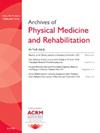针对心力衰竭患者的不同高强度间歇训练计划与中等强度持续训练:系统回顾与荟萃分析。
IF 3.6
2区 医学
Q1 REHABILITATION
Archives of physical medicine and rehabilitation
Pub Date : 2025-01-01
DOI:10.1016/j.apmr.2024.05.028
引用次数: 0
摘要
目的探讨不同 HIIT 方案与 MICT 相比对不同 HF 亚型心肺功能参数的影响大小:研究选择:随机对照试验(RCT):将 HIIT 与 MICT 在心房颤动患者中的应用进行比较。主要结果为峰值耗氧量(VO2peak)。两名审查员独立评估了 99 项初步确定的研究,最终筛选出 15 项符合资格标准的 RCT:数据提取:由两名观察员使用根据 CONSORT 声明和 TIDieR 起草的数据提取表独立提取数据;根据 TESTEX 量表对研究的方法学质量进行单独分析:系统综述共纳入15项RCT研究,553名HF患者。纳入的研究总体方法学质量为中等至良好。结果显示,在改善心房颤动患者的 VO2 峰值方面,HIIT 一般比 MICT 更有效(n=541,15 项 RCT;MD:1.49 mL/kg/min,I2=66%,pConclusions:与 MICT 相比,长间隔、大运动量的 HIIT 方案在改善 HFrEF 患者的心肺功能方面可能会产生更大的益处。还需要进一步研究,以确定针对不同心房颤动亚型的最佳 HIIT 方案,并为临床实践提供明确的建议。本文章由计算机程序翻译,如有差异,请以英文原文为准。
High-Intensity Interval Training Programs Versus Moderate-Intensity Continuous Training for Individuals With Heart Failure: A Systematic Review and Meta-analysis
Objective
To explore the effect sizes of different high-intensity interval training (HIIT) protocols on cardiorespiratory parameters when compared with moderate-intensity continuous training (MICT) in different heart failure (HF) subtypes.
Data Sources
Electronic databases were searched from their inception date until January 23, 2023.
Study Selection
Randomized controlled trials (RCTs) were included if they compared HIIT with MICT in patients with HF. The primary outcome was peak oxygen consumption (Vo2peak). Two reviewers independently evaluated 99 initially identified studies, resulting in the selection of 15 RCTs that met the eligibility criteria.
Data Extraction
Data were extracted independently by 2 observers using a data extraction form drafted based on the CONSORT statement and the Template for Intervention Description and Replication; the methodological quality of the studies was analyzed individually based on the Tool for the Assessment of Study Quality in Exercise scale.
Data Synthesis
Fifteen RCTs with 553 patients with HF were included in the systematic review. The included studies had moderate to good overall methodological quality. The results showed that HIIT was generally more effective than MICT at improving Vo2peak in patients with HF (n=541, 15 RCTs; MD: 1.49 mL/kg/min; I2=66%; P<.001). However, the effect size varied depending on the HF subtype and HIIT protocol used. For patients with HF with reduced ejection fraction (HFrEF), the long-interval (high-intensity interval lasting ≥4 min) and high-volume HIIT (high-intensity efforts in total ≥15 min) showed the largest benefits over the MICT (n=261, 6 RCTs; MD: 2.11 mL/kg/min; P<.001); followed by the short-interval (≤1 min) and high-volume HIIT (≥15 min; n=71, 3 RCTs; MD: 0.91 mL/kg/min; P=.12), and the short-interval and low-volume HIIT showed the least superiority over MICT (n=68, 3 RCTs; MD: 0.54 mL/kg/min; P=.05). For patients with HF with perceived ejection fraction, there was a modest beneficial effect from HIIT over MICT (n=141, 3 RCTs; MD: 0.55 mL/kg/min; P=.32).
Conclusions
The long-interval and high-volume HIIT protocol may produce greater benefits than MICT for improving cardiopulmonary fitness in patients with HFrEF. Further research is needed to determine the optimal HIIT protocol for different HF subtypes and to provide definitive recommendations for clinical practice.
求助全文
通过发布文献求助,成功后即可免费获取论文全文。
去求助
来源期刊
CiteScore
6.20
自引率
4.70%
发文量
495
审稿时长
38 days
期刊介绍:
The Archives of Physical Medicine and Rehabilitation publishes original, peer-reviewed research and clinical reports on important trends and developments in physical medicine and rehabilitation and related fields. This international journal brings researchers and clinicians authoritative information on the therapeutic utilization of physical, behavioral and pharmaceutical agents in providing comprehensive care for individuals with chronic illness and disabilities.
Archives began publication in 1920, publishes monthly, and is the official journal of the American Congress of Rehabilitation Medicine. Its papers are cited more often than any other rehabilitation journal.

 求助内容:
求助内容: 应助结果提醒方式:
应助结果提醒方式:


